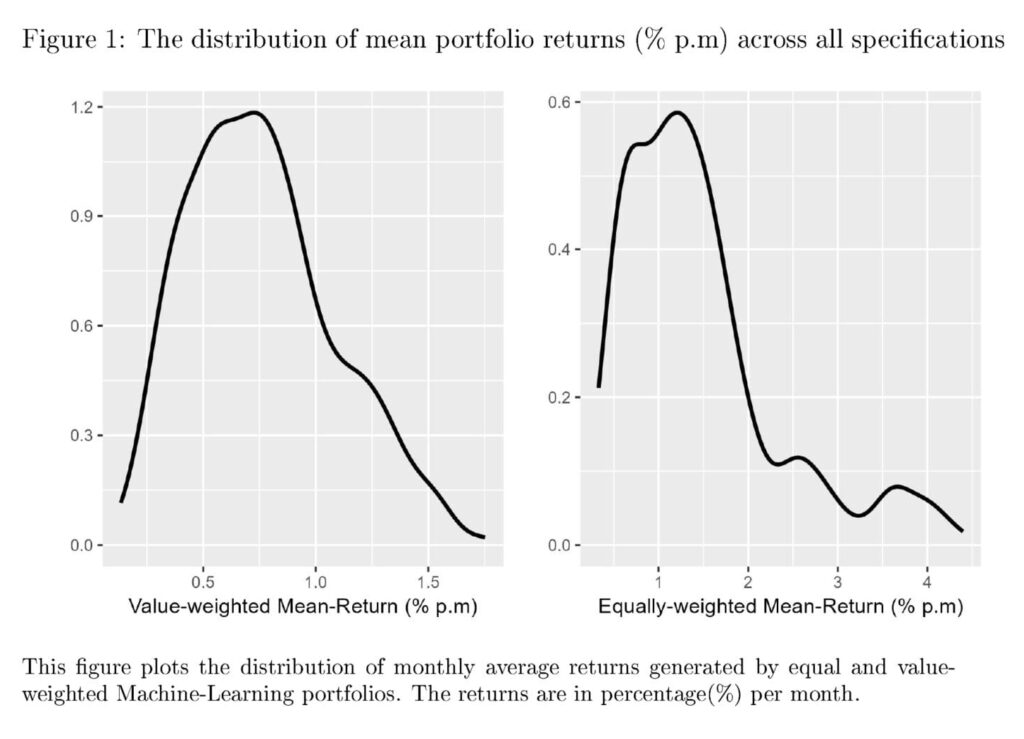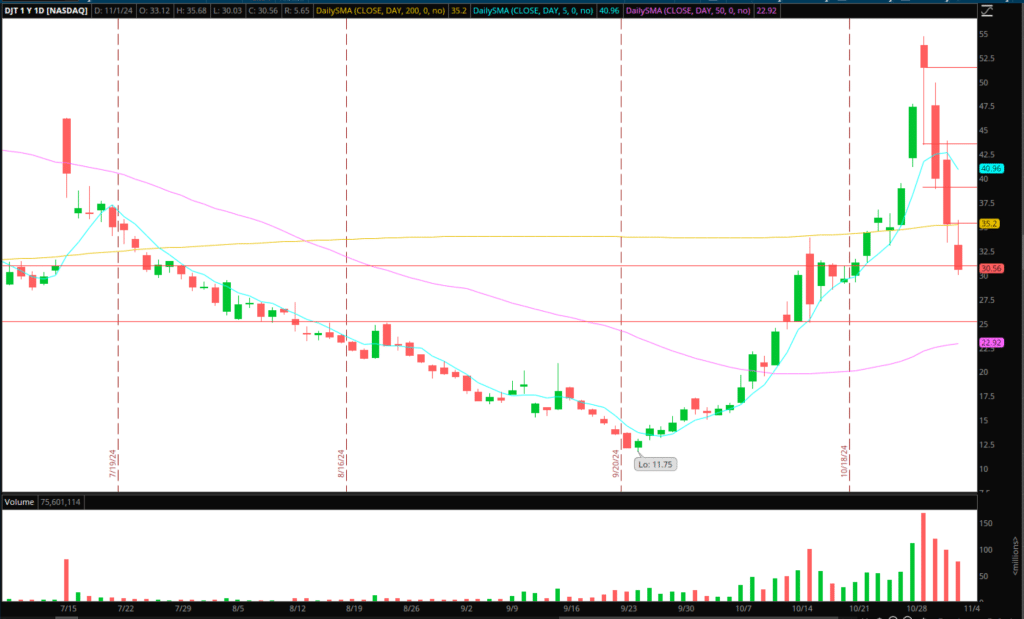By the tip of this text, you’ll know find out how to calculate the risk-to-reward ratio of an iron condor and find out how to management this ratio.
Let’s have a look at an instance.
Contents
SPY is the S&P 500 ETF, which many would agree is probably the most liquid underlying within the equities world.
Let’s have a look at the SPY iron condor comprising a name and put credit score unfold.
Date: September 6, 2024
Worth: SPY @ $540
Purchase one October 31 SPY $590 name @ $0.45Sell one October 31 SPY $580 name @ $1.10Sell one October 31 SPY $500 put @ $4.67Buy one October 31 SPY $490 put @ $3.65
If an investor initiated the iron condor at these costs, he would obtain a $1.67 credit score per share.
As a result of:
$1.10 + $4.67 – $0.45 – $4.90 = $1.67
This iron condor has vast wings.
The put credit score unfold has a width of 10 factors (500 – 490).
The name credit score unfold additionally has a width of 10 factors (590 – 580).
The expiration graph of this iron condor modeled in OptionStrat would appear to be this:
If the value falls contained in the iron condor at expiration, the investor retains the credit score, and each the put unfold and the decision unfold expire nugatory out-of-the-money.
Therefore, the utmost revenue is $1.67 per share.
This can be a single-contract iron condor.
Since one contract represents 100 shares, the utmost greenback revenue from this commerce can be $167.
Within the excessive case the place the value strikes fully out of the iron condor on the draw back, the decision unfold will expire out-of-the-money nugatory, and the put unfold will probably be at an entire loss.
As a result of the distinction between the quick and lengthy strikes is $10, the unfold will probably be at a $10 loss per share.
Since $1.67 was collected as a credit score initially.
The precise max loss is $10 – $1.67, or $8.33.
Following the identical line of thought, the utmost loss can be $8.33. on the upside, if the value pierces the decision unfold.
The chance-to-reward ratio of an iron condor is the utmost threat divided by the utmost reward.
In our instance, that is calculated by taking the chance of $8.33 per share and divided by the max reward of $1.67.
Threat-to-reward ratio = $8.33 / $1.67 = 5
Should you choose to calculate it utilizing the whole greenback threat of the commerce ($833) and the whole greenback reward on a contract foundation ($167), you get the identical reply:
$833 / $167 = 5
Should you look again on the OptionStrat screenshot, these are the numbers that the modeling software program offers:
Max loss: $832.50
Internet credit score: $167.50
They match what we had calculated.
How Does The Threat-To-Reward Change If We Slender The Width Of The Spreads In The Iron Condor?
Generally, you might be lowering the chance by narrowing the width of the spreads.
Subsequently, it could lower the risk-to-reward ratio.
The good thing about utilizing modeling software program is that we are able to merely change the strikes of the iron condor to be 5 factors vast as an alternative of 10:
Entry 9 Free Possibility Books
Right here, it says that the max loss is $404 whereas the max reward is $96.
Subsequently, this iron condor with slim wings has a risk-to-reward ratio of 4.2.
Calculated by 404 / 96 = 4.2
How Does The Threat-To-Reward Change If We Transfer The Spreads Nearer To The Cash?
Right here, we saved the width of the spreads at 5 factors however moved them nearer along with the quick strikes at $515 and $565:
We see that now the risk-to-reward is:
$285 / $215 = 1.3
Shifting the spreads nearer, we gather bigger credit score, leading to a bigger potential reward. Subsequently, it decreases the risk-to-reward ratio.
What Is The Distinction Between Threat-To-Reward Ratio And Reward-To-Threat Ratio?
The chance-to-reward ratio is the chance divided by reward – as we now have been doing in our examples.
Threat-to-reward ratio = $833 / $167 = 5
Generally, folks will point out the reward-to-risk ratio, which is the reward divided by the chance. In our instance, it could be:
reward-to-risk ratio = $167 / $833 = 0.2
One is the inverse of the opposite.
For instance:
1 / 5 = 0.2
And,
1 / 0.2 = 5
Generally, folks will use the 2 phrases loosely as an alternative of its strict definition.
So, it is very important know which quantity they’re speaking about.
What Is The Threat-To-Reward If We Gather One-Third Of The Width Of The Unfold?
The one who asks this query have to be watching Tastylive, as they all the time point out that they like to gather one-third the width of the unfold in an iron condor.
Right here is an instance the place we gather $1.67 per share, and the width of the spreads is 5 factors:
As a result of:
1.67 / 5 = 0.33
We have now collected one-third of the width of the unfold.
Studying the numbers from OptionStrat, the risk-to-reward is:
$333 / $167 = 2
A risk-to-reward of two implies that the max loss is twice the scale of the max potential revenue.
Is The Threat-To-Reward All the time Two If We Gather One-Third Of The Width Of The Unfold?
Sure, it’s.
Since:
reward = 1/3 * width
Then:
Threat / reward = (width – reward) / reward = (width – 1/3 * width) / (1/3 * width) = (2 / 3 * width) / (1 / 3 * width) = 2
So now we all know that Tastylive likes to have a risk-to-reward ratio of two to 1 for iron condors.
However you may regulate the risk-to-reward to your liking.
Your reward relies on the credit score collected.
Your threat relies on the width of the unfold.
You possibly can slim the spreads to lower threat by lowering the risk-to-reward ratio.
Or you may transfer the unfold nearer to the cash to gather extra credit score.
We hope you loved this text on find out how to calculate the risk-to-reward ratio of an iron condor.
If in case you have any questions, please ship an e mail or depart a remark under.
Commerce secure!
Disclaimer: The knowledge above is for instructional functions solely and shouldn’t be handled as funding recommendation. The technique introduced wouldn’t be appropriate for buyers who will not be acquainted with alternate traded choices. Any readers on this technique ought to do their very own analysis and search recommendation from a licensed monetary adviser.
















